Present THE AMBASSADOR SERIES
Ambassadors of Nordic Countries on India – Nordic Partnership: An Idea Whose Time Has Come | 28th June | IIC
Present
THE AMBASSADOR SERIES
with
Ambassadors of Nordic Countries to India
On
“India – Nordic Partnership: An Idea Whose Time Has Come”
EVENT DETAILS
DATE Thursday, June 28, 2018TIME 5:30 PM – 7:00 PM (Registration: 05:00 PM )LOCATION Seminar Rooms II & III, Kamaladevi Complex, India International Centre, New DelhiSPEAKERS H.E. Mr. Thorir Ibsen, Ambassador of Iceland to India
H.E. Mr. Peter Taksoe-Jensen, Ambassador of Denmark to IndiaH.E. Ms. Nina Vaskunlahti, Ambassador of Finland to India
Mr. Gautam Bhattacharyya, Deputy Head of Mission, Embassy of Sweden, New Delhi
Ms Hanne Meldgaard, Minister Counsellor & Deputy Head of Mission, Royal Norwegian Embassy, New Delhi CHAIR Ambassador Ashok Sajjanhar, President, Institute of Global Studies & Former Ambassador of India to Kazakhstan, Sweden and Latvia
H.E. Mr. Peter Taksoe-Jensen, Ambassador of Denmark to IndiaH.E. Ms. Nina Vaskunlahti, Ambassador of Finland to India
Mr. Gautam Bhattacharyya, Deputy Head of Mission, Embassy of Sweden, New Delhi
Ms Hanne Meldgaard, Minister Counsellor & Deputy Head of Mission, Royal Norwegian Embassy, New Delhi CHAIR Ambassador Ashok Sajjanhar, President, Institute of Global Studies & Former Ambassador of India to Kazakhstan, Sweden and Latvia
ABOUT THE EVENT
The changing world order has opened multiple doors to exploring new strategic synergies between regions that may be divided by distance but are united by shared values, interests and aspirations. India’s rapidly growing ties with the Nordic countries enjoy huge potential to evolve into strategic partnerships. While India offers diverse opportunities by virtue of its three ‘distinct and desirable D’s’ of Democracy, Demography and Demand, the Nordics stand out at the top of various human development indices and can, therefore, act as a model for India to emulate. In the background of the recent developments at the first ever India-Nordic Summit held in April 2018, the immense possibilities of this robust partnership surfaced indisputably and paved the path to a symbiotic relationship of complementarity and convergence. Together, through these healthy exchanges, India, Sweden, Norway, Finland, Denmark, and Iceland can take a quantum leap into the future that unleashes the power of innovation, skill development, socio-economic growth and environmental solutions.
This session will focus on constructive deliberations on the scope and expanse of the emerging bilateral and multilateral partnerships between India and the Nordic countries and identify strategies for making the enhanced cooperation between them into a potential game changer.
Please respond by clicking one of the buttons below
Thórir Ibsen took up his duties as Ambassador of Iceland to India in September 2014. Previous positions include Ambassador of Iceland to the European Union and to Belgium with accreditation to Luxembourg, the Netherlands and Switzerland, Ambassador of Iceland to France with accreditation to Italy and Spain, Permanent Representative of Iceland to the OECD and UNESCO, Chief Negotiator and Ambassador for Climate Change, Director of the Defence Department, Deputy Permanent Representative of the Delegation of Iceland to NATO, Director of the Department of Natural Resources and Environmental Affairs, and Head of the International Department of the Environment Ministry of Iceland.Thórir Ibsen holds a M.A. degree in International Relations from the Faculty of Political Science, York University, Canada, which he obtained in 1984. He is married to Dominique Ambroise Ibsen, visual artist. They have one grown up son.
Peter Taksøe-Jensen is currently the ambassador of Denmark to India, Bhutan, Maldives and Sri Lanka. Before, he was the Ambassador of Denmark to the United States from 2010 to 2015. He has also served as the Assistant Secretary-General for Legal Affairs of the United Nations, New York from 2008 to 2010. He was the Under-Secretary for Legal Affairs and Head of the Legal Service, Ministry of Foreign Affairs of Denmark from 2003 to 2008, Head of Section, Department for Legal Service, Ministry of Foreign Affairs of Denmark from 1999 to 2003. In the year 1999, he served as the Counsellor, Permanent Representation of Denmark to the European Union, Brussels. Additionally, he was the Head of Section, Permanent Representation of Denmark to the European Union, Brussels from 1995 to 1999.Furthermore, he has served as the Head of Section, Department for Security Policy, Ministry of Foreign Affairs of Denmark from 1992 to 1995, First Secretary, Royal Danish Embassy, Vienna, from 1989 to 1992 and the Head of Section, Ministry of Foreign Affairs of Denmark, from 1988 to 1989 and the Head of Section, Danish Ministry of Justice, Denmark from 1986 to 1987. He was also the Chairman of the Danish Governments Commission on the Red Cross, 2007-2008, Vice Chairman 2000-2007 Member of the Commission on Jurisdiction, established by the Danish Minister for Justice, 2004-2008 Member of the Commission on the Law on Archives, established by the Danish Minister for Culture, 2002-2003 Lecturer at numerous courses on EU Law, EU Policies and negotiations, and on EU procedures and techniques, 1999-2008.
After graduating from the University of Turku in 1983 with a Master’s Degree in Political Sciences, Ms. Nina Vaskunlahti joined the Ministry for Foreign Affairs of Finland in 1984. Her first posting was to Canberra, Australia, between 1985 and 1988. From January 1989 to August 1992, she served as First Secretary at the Representation of Finland to the European Communities and then as the first Finnish National Expert at the European Commission, Directorate General for External Relations, in Brussels. Ms. Vaskunlahti then held a Counsellor’s position at the Unit for Cooperation with Neighbouring Areas at the Ministry for Foreign Affairs for three years, before her secondment to the Office of the High Representative of the International Community in Sarajevo in 1996.Thereafter she served as Counsellor at the Permanent Representation of Finland to the European Union in Brussels and contributed to the first Finnish Presidency of the Council in 1999. Between September 2000 and May 2004, Ms. Vaskunlahti was posted as Deputy Head of Mission to the Finnish Embassy in Moscow. In September 2004 she moved back to Brussels and served as Ambassador, Deputy Permanent Representative (COREPER 1) at the Permanent Representation of Finland to the European Union until autumn 2008 including the second Finnish Presidency of the council. In September 2008 she assumed the position of Director General of the Department for Russia, Eastern Europe and Central Asia at the Ministry for Foreign Affairs. Ms. Vaskunlahti served as Finnish Ambassador to Turkey between September 2012 – August 2016. As of September 2016 she is serving as Ambassador of Finland to India and Bangladesh. Ms. Vaskunlahti was born in 1959 in Huittinen, Finland and is married to Dr. Andreas Herdina.
Mr. Gautam Bhattacharyya, Deputy Head of Mission, Embassy of Sweden, New Delhi
Gautam S. Bhattacharyya is currently the Deputy Head of Mission at the Embassy of Sweden in New Delhi. An economist by training, he has previously been posted at the Swedish embassies in Santiago de Chile and New Delhi (2004-2008), apart from serving at the departments for International Trade Policy, Asia and Oceania and Human Resources in Stockholm. During the years 2009-2010 he worked in the private sector with Public Affairs consultancy firm Springtime AB, setting up the India operations of that company. Between 2011-2013, he worked for Marivent Research, a consulting firm specializing in investigative due diligence in the Indian and other emerging markets.
In his free time, he has devoted his energy towards organizing and engaging with the Indian diaspora community in Sweden and globally. Apart from his native Swedish, English and Bengali, he also speaks Spanish, French and German and some Hindi. He has two children. CHAIR 
Ambassador Ashok Sajjanhar, President, Institute of Global Studies & Former Ambassador of India to Kazakhstan, Sweden and Latvia
Ambassador Ashok Sajjanhar belongs to the Indian Foreign Service and has acquitted his responsibilities in the diplomatic service for 34 years. He was Ambassador of India to Kazakhstan, Sweden and Latvia and has worked in senior diplomatic positions in Indian Embassies/Missions in Washington DC, Brussels, Moscow, Geneva, Tehran, Dhaka and Bangkok and also at Headquarters in India. He negotiated for India in the Uruguay Round of Multilateral Trade Negotiations and in negotiations for India-EU, India-ASEAN and India-Thailand Free Trade Agreements.
He contributed significantly to strengthening strategic ties and promoting cultural cooperation between India and USA, EU, Russia and other countries.Ambassador Sajjanhar worked as head of National Foundation for Communal Harmony to promote amity and understanding between different religions, faiths and beliefs. Ambassador Sajjanhar has been decorated by Governments of Kazakhstan and Latvia with their National Awards and by Universal Peace Federation with Title of ”Ambassador of Peace.” Currently Ambassador Sajjanhar is President of Institute of Global Studies, New Delhi. He writes, travels and speaks extensively on issues relating to international relations, foreign policy and themes of contemporary relevance and significance. He appears widely on TV panel discussions. Ambassador Sajjanhar is interested in reading, music and travelling. His wife Madhu is an economist and an educationist. They have a son and a daughter both of who are accomplished singers. Their son passed out of Yale University and their daughter is pursuing her PhD at University of Minnesota.
Maniesh Paul Wins The SAAF’s Best Host In Asia Award In Hong Kong
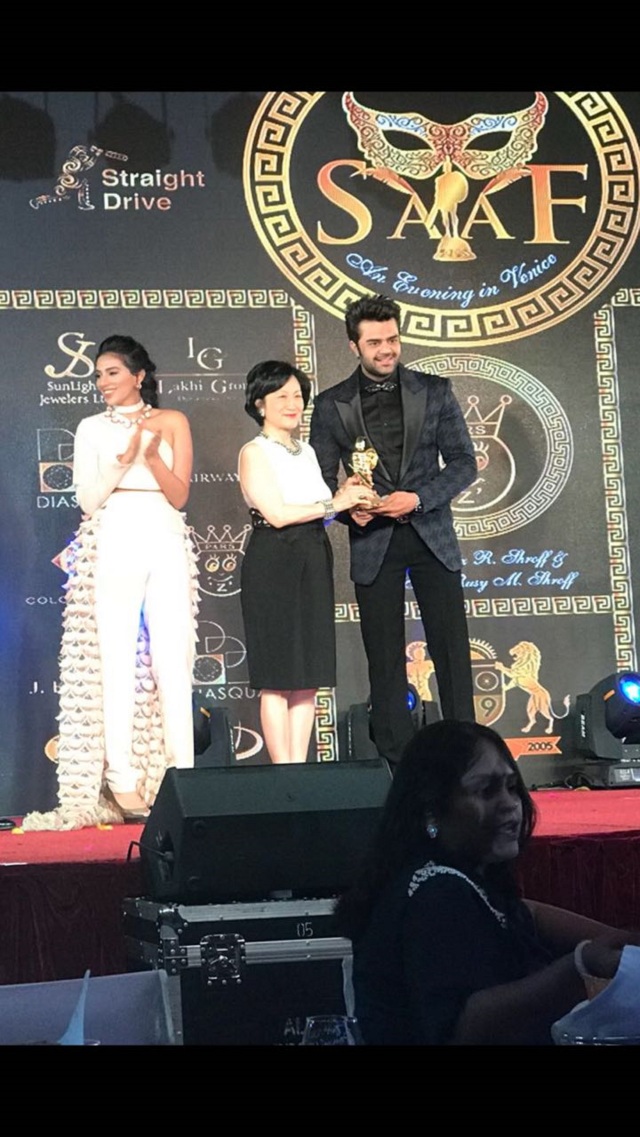
Maniesh Paul Scoops The Best Host Award In Asia At SAAF 2018 In Hong Kong
Versatile anchor-turned-Bollywood actor – Maniesh Paul is a dynamite when he takes over as a host and his flair as an emcee for any event is simply unprecedented. The man can effortlessly charm the audience with his affable and witty on-stage presence. And now the super talented host has proved that he is not only the Sultan of stage in India but also Asia.
Maniesh Paul, who has impressed every time he has set foot on-stage, has been recently honoured by the SAAF Awards at the 12th Sarjan Annual Award Function, in the presence of top officials from the Hongkong government.
The multifaceted anchor and actor walked away with the Best Host in Asia award at the SAAF Awards 2018.
Speaking about bagging the award, an excited Maniesh said, “It’s been wonderful winning the award, especially on the international grounds. It feels amazing that your work is appreciated all across Asia and I am grateful to SAAF for honouring me with this award. I feel amazing getting the award for the Best Host in Asia.”
Sarjan Group is a Community Organization in Kowloon, Hong Kong which organises SAAF Awards in collaboration with Hong Kong government annually. This year they were celebrating their 12th year of honouring talents across Asia.
Screenwriter Association conference to have Aamir Khan as Chief Guest!
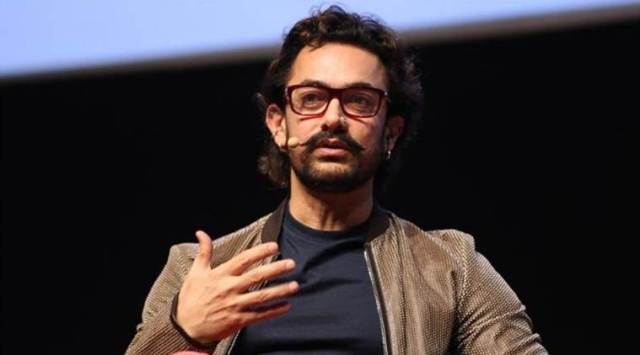
Screenwriter association is organizing its 5th annual conference in which director, producer and actor Aamir Khan will be chief guest. “yes we are honoured to have Mr. Aamir Khan as our chief guest” confirms Zama Habib, the association’s General Secretary. Zama further elaborated that the key note speaker will be well known journalist Vinod Dua at this three day conference starting from August 1 to 3rd.
The theme of SWA (screenwriter association) conference is “where the mind is without fear”, challenges facing the Indian Screeenwriter today. There will be panel discussions on various aspects and challenges of TV, Films and Digital medium for which well known writer, director, studio and channel heads have been invited. In every conference SWA honors stalwarts from TV, Film and lyrics and this conference is no difference. “In other way we are honored to give honor to Mr. Khwaza Ahemad Abbas for film, Shailendra for lyrics and Rahi Masoom Raza for tv writing” adds award winning writer Sanjay Chouhan, the conference convenor.
Fête de la Musique / World Music Day 2018 | Alliance Française de Delhi
Alliance française de Delhi is pleased to present
World Music Day 2018
21 JUNE 2018 | 5PM Onwards
Alliance Française de Delhi, 72, Lodi Estate, New Delhi – 110003
Nearest Metro Station: Jorbagh, Khan Market 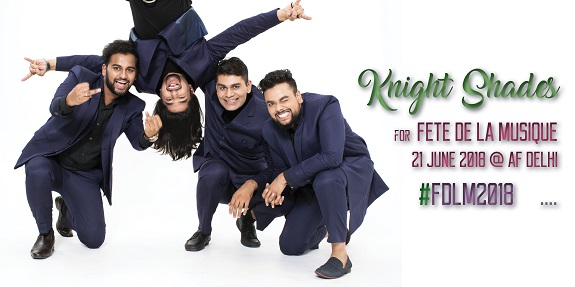
In the month of June, the entire world celebrates music in its different forms and manifestations through the “Fête de la Musique”, a day dedicated to the promotion of music, created by the French Ministry of Culture, which first took place in 1982 in Paris. Since this first edition, this event has known a growing success, and has become an international highlight of amateur and professional practice and of musical diversity. This is also a very special occasion for many people in many different countries to attend free live performances, in all kinds of places, even the most unusual ones.
| ||
Growthnet.6, Lessons for India
Researcher Report: Not ours, Sagar Media inc:
Growthnet.6, Lessons for India for $10T Economy by 2030
June20, 2018 (C) Ravinder Singh ravindersinvent@gmail.com
Two things came up repeatedly at two days of 22 hours of intense deliberations were‘India to be $10T Economy by 2030’ and ‘Productivity growth of Indian Economy’ and there was no convincing reply. At the same venue in 1990 this inventor observed –‘India Contributes 2% to World GDP and 98% of GDP is generated outside India – India Should Serve this 98%’. India is presently contributing 3% to world GDP but population too has grown 60% in the meanwhile’.
Two most weird things repeated were ‘India may neglect Manufacturing & Focus on Services’ and ‘FIN-TECH’ facilitating financial transactions. India can’t serve $80 Trillion World GDP presently to $200T by 2030 by services which are basically BACK OFFICES.
YES India can be $10T Economy by 2030 But has to FOCUS on R&D, Manufacturing and Get Rid of Middlemen – Indian Economy is hurt in Three Ways When India imports $60b worth of Goods from China; First Indians pay $200b in retail, Second Creates huge BLACK MONEY and Third No Servicing of Imported Hardware.
Power Capacity Addition Growth 38% – Generation Growth 26%
http://www.cea.nic.in/reports/monthly/executivesummary/2014/exe_summary-05.pdf –http://www.cea.nic.in/reports/monthly/executivesummary/2015/exe_summary-05.pdf
Opening session was presentation by Piyush Goyal holding three portfolios Finance, Railways and Coal – till recently was Power minister also. Reliable data of Power sector is available. Growth in power generation in Apri-May14 – 176.814 BU and Apri-May18 – 214.494 BU was 37.680 BU. This is 21.31% Growth in 4 Years – accounting for Renewable would be 46 BU growth or 26%. Y-O-Y Growth rate Apr-May18 is 1.92% only which for Apr-May14 was 9%.
All India installed capacity in May14 was 248,509 MW which includes 31,692 MW of Renewables – four years later in May18 is 343,898 MW including 69,022 MW Renewables – 38.38%.
There was huge Increase in Railways CAPEX – but Railway throughput is negative or zero practically, average Speed of Trains has reduced – punctuality rate is down to 66% mainly because of no replacement of old Diesel Locos and Junked Coaches & Wagons.
JUNKED Diesel Locos serve 100% of the Railway Lines – including Electrified Lines.
There was no reason for ‘Cursing & Blaming Other Party’ when since 1998 two parties Led Government for 10 years each. Performance of Ruling Party is Going Down every day. NPAs had gone up 300%.
https://www.rbi.org.in/Scripts/BS_ViewWssExtractdetails.aspx?id=31262 – https://www.rbi.org.in/Scripts/BS_ViewWssExtractdetails.aspx?id=44028
There was 44% Growth in Aggregate Deposits from Rs.78884 billion in May2014 toRs.113,922 billion May2018 but Credit growth was 41% from Rs.60,674 billion toRs.85,511 billion. But deployment Bank Credit was DISRUPTIVE –
https://www.rbi.org.in/Scripts/BS_PressReleaseDisplay.aspx?prid=44074 – http://rbidocs.rbi.org.in/rdocs/content/docs/IEPR2346A10614_S1.xls
Credit Growth Sector Wise April2018 from April2014
Gross Credit Growth 34.2% – Rs.76,130 b from Rs.56,724 = Rs.19,406 b
Ø Agriculture 48.7% – Rs.10,268 billion from Rs.6,901 billion = Rs.3,367 b
Ø Industry 5.4% – Rs.26,511 billion from Rs.25,140 billion = Rs.1,371 b
Ø Services 48.5% – Rs.19,813 billion from Rs.13,341 = Rs.6,472 b
Ø Personal Loans 84.8% – Rs.19,211 billion from Rs.10,394 billion = Rs.8,817 b
Credit Growth was marginally above INFLATION say 20% and Exchange Rate 12% or 13%. There was NEGLIGIBLE Credit flow to Private Sector – NEGATIVE TO INDUSTRY.
Trade Deficit at is all-time high of $160b – Economy is STRUGGLING.
NPAs have already exceed Rs.10,000 billion but ‘When A Company Defaults in Clearing Bank Dues, it Already had Defaulted in payment to Supplies of Products & Services and Own Employees.’
India must Accurately Release PUBLIC DATA – Flows of Water, Deposit & Credit Growth, Revenue Earned by PSUs and Private Sector, Jobs and Salary Paid to Employees, Price and Supply of Fruits and Vegetables in real time basis.
Majority of Indians from Birth to Age 30 prepare for EXAMS and very few Qualify for Civil Service – There is no time for LEARNING & Skilling. 1.5m Appear for UPSC but only 1100 are selected for appointment.
Manipal University – Oldest and one the Biggest in terms of intake in six decades has not created a Single Useful Patent – files Bogus Patents.
TV Mohandas Pai when asked ‘Why can’t you Clean BANGALURU and Prevent Flooding?’
He blamed it on REGULATORY issues.
It was repeatedly pointed out ‘China has 15 Global Icons India None’ Mohandas Pai blamed legacy issue – Not on Failure of Education System which are MILKING MONEY than providing world class education.
Hair Cut ‘Service’ Economy
Just before Demonetization I was paying Rs.80 for Hair Cut – soon after Demonetization Rs.100 – last time Rs.150 – So Services contribution Could Go Up 100% without new investment or job creation.
Ravinder Singh, Inventor & Consultant, INNOVATIVE TECHNOLOGIES AND PROJECTS
Y-77, Hauz Khas, ND -110016, India. Ph: 091- 8826415770, 9871056471, 9650421857
Ravinder Singh* is a WIPO awarded inventor specializing in Power, Transportation,
Smart Cities, Water, Energy Saving, Agriculture, Manufacturing, Technologies and Projects
The Crisis of Funds and the Woe of Wage Payment Delays in MGNREGA
|
| CPR is pleased to invite you to a talk on The Crisis of Funds and the Woe of Wage Payment Delays in MGNREGA Dr Rajendran Narayanan, Assistant Professor, School of Liberal Studies, Azim Premji University |
| Friday, 22 June 2018, 11:15 a.m. to 1:00 p.m. |
| Conference Hall, Centre for Policy Research |
 |
| Image Source: Daniel LofredoRota |
About the Session
The Mahatma Gandhi National Rural Employment Guarantee Act, 2005 is a landmark law which guarantees 100 days of livelihood to rural households. Yet even after a decade of its implementation the Act faces serious challenges to its implementation. While Budget 2017 seemed to have significantly increased allocations to MGNREGA, the Act continues to face a crisis of funds resulting in low wage rates and consistent delay in the payment of wages to beneficiaries. Over the past few years, a team of researchers, including Rajendran, have been measuring the extent of this fund crisis and its impact on wage payments in 10 states. This discussion will share some of their main findings and highlight the reasons behind the delay of funds (including the dynamics between centre-state in determining wage rates), and the impact this will have on livelihood security in rural India.
About the Speaker
Dr Rajendran Narayanan is an Assistant Professor in the School of Liberal Studies at Azim Premji University, Bangalore. He completed his Ph.D in mathematical statistics from Cornell University. He has held academic positions in Indian Statistical Institute, Kolkata, Cornell University, and Ashoka University. Since his Ph.D, he has been an intrinsic member of LibTech India, an informal group of researchers and activists that work on questions of transparency and accountability in MGNREGA and the Public Distribution System. The group works with several civil society organisations in Jharkhand, Bihar, Telangana, and Andhra. As a group, LibTech India tries to understand rural citizen experience in times of technology mediated policy initiatives and aim to create bottom-up, people-driven, “Janata Information Systems (JIS)”. The group hopes that this will lead to continuous monitoring of government programmes, leading to more empowerment and better participatory democracy.
About the Policy In-Depth Series
The Policy In-Depth Series hosted by Accountability Initiative at the Centre for Policy Research deliberates on the implementation of key welfare programmes in India, the policy decisions that direct their course and the impact this has on citizens.
Kindly click here to register or RSVP at ashrivastava@accountabilityindia.org.
The full discussion will be live streamed through Facebook on Accountability Initiative’s Facebook page.
|
Three new Tibet airports near border pose threat
Claude Arpi | June 20, 2018
On June 9, the Civil Aviation Administration of China and the Tibetan Autonomous Region’s (TAR) government announced that Tibet will soon have three new airports. A communiqué said: “Construction of three airports, all above the altitude of 3,900 metres, should begin in 2019.”
Xinhua, the Chinese official news agency, gave the rationale: “Tourist travel will be more convenient and economic development in Tibet’s agricultural and pastoral areas will also be assisted.” The announcement came during a conference on Civil Aviation System Supporting Tibet Airport Construction Development held in Lhasa a day earlier.
The Chinese language press gave more information about the location of the three airports — one will be located in Lhuntse in Lhoka (called Shannan by the Chinese) area, north of the Upper Subansiri and Tawang districts of Arunachal Pradesh; the second will be between Tingri and Lhatse counties of Shigatse City, north of Zangmu, the border post with Nepal; and the last in Purang near the trijunction Nepal-Tibet-India, north of Pithoragarh district of Uttarakhand (on the yatris’ route to Mount Kailash). While Tingri airport is near the Nepali border, the other two (Lhuntse and Purang) are at a short distance from the Indian border.
Xinhua said that Capital Airport Holding Company will be the contractor of the Lhoka, while the Shanghai Airport Authority will be responsible for the airport in Shigatse. The West Airport Group will take care of Purang. It reported: “The three companies are scheduled to transfer the airports to local operators after one or two years’ operation.” The airports should be completed in 2021, by which time there will be eight airports in the TAR region (plus three close to the Indian border in Xinjiang — Kashgar, Hotan and Yarkand).
“At present, the preparatory work for the three airports is underway. The preferred sites have been determined, and the construction of temporary weather stations at each site is completed,” added the news agency.
The three airports will be high-altitude airports; they will be operated by companies, including Air China, China Eastern Airlines or Sichuan Airlines, which are already involved in Tibet.
Let us not forget an important element; by law, these new airports will be for “dual use” — meaning they will have to be built to suit both the civilian and military standards. The People’s Liberation Army may use them when required.
The conference was a high-level affair. Apart from TAR’s party secretary Wu Yingjie, China’s civil aviation administration’s secretary Feng Zhenglin, TAR governor (who is also the director of the TAR Border Defence Committee) Che Dalha, deputy secretaries Ding Yexian and Zhuang Yan and the commander of the Tibet Military District Lt. Gen. Xu Yong attended it. Three other PLA officers were also on the dais. The level of the participants shows the importance of these three new airports for Beijing, particularly after the post-Doklam “reset” of bilateral relations with India.
One has to understand Chinese President Xi Jinping’s plans for Tibet. The “core” leader had declared: “Govern the nation by governing the borders; govern the borders by first stabilising Tibet; ensure social harmony and stability in Tibet and strengthen the development of border regions.”
For a few months, the authorities in Tibet have started implementing the boss’ theory while the party’s propagandawing is doing its best to entice the local Tibetan population to side with it. This serious development is unfortunately largely being ignored in India.
A new formula is mentioned in every speech of the local satraps — the inhabitants of China’s borders (with India) should be “the protectors of the sacred homeland and the builders of happy homes”.
It has taken a concrete shape with the mushrooming of new “model” villages and towns on the Tibetan side of the Indian border, mainly north of Arunachal Pradesh, officially linked with “poverty alleviation” and the “defence of the borders”. The development of China’s borders with India is indeed going on in full swing; the construction of three new airports has to be seen in this context.
Several senior Communist leaders have visited the new villages, either north of Kibithu in the Lohit valley; in Metok, north of Upper Siang district; in Yume (also written Yumai), north of Takshing in Upper Subansari or in Lepo, Marmang and Tsona, north of Khenzimane and Tawang. The Lhuntse airport will serve the Tsona and Yume areas.
Mr Wu recently gave an interview to the People’s Daily on the happenings in the border areas; he spoke of the significance of implementing the new strategy of “rejuvenating villages under the banner of the protectors of sacred homeland and the builders of happy homes”.
The new scheme started soon after the conclusion of the 19th party congress, when Mr Xi sent a reply to two young Tibetan herders who had written to him introducing their village, Yume. According to Xinhua, Mr Xi “encouraged a herding family in Lhuntse County to set down roots in the border area, safeguard Chinese territory and develop their hometown”. He acknowledged “the family’s efforts to safeguard China’s territory, and thanked them for the loyalty and contributions they have made in the border area. Without the peace in the territory, there will be no peaceful lives for the millions of families,” he wrote.
The two Tibetan girls, Choekar and Yangzom, had told the CCP secretary-general about their “experiences in safeguarding the border area and the development of their township over the years”.
The girls’ village, Yume, is located in Lhuntse county, not far from the remote Indian village of Takshing, which incidentally got its first motorable road earlier this month. Mr Xi further hoped that the girls’ family could “motivate more herders to set down roots in the border area like kalsang flowers”, blooming in hard conditions.
China is ready to invest 110 million yuan in the Yume Well-Off Rural Construction Project. To start with, 56 sets of light-steel prefabricated residential houses are being built, linked by two new municipal roads, a central park and six squares. Electricity and water have already reached the border village.
The rationale of the these post-Doklam measures is “to consolidate the border and to promote the deep integration of the military and the people”. Tourism and “cultural” industries remain the pillars of the scheme; it is supposed to help the population to get rid of poverty through participation in tourism while promoting “ethnic exchanges” — with Han tourists. Yume is the model for the entire scheme.
Another pet project of Mr Xi is the Military-Civilian Integration (or “Fusion”); this too applies to the border. Consider Zhayul County located north of Anjaw district of Arunachal Pradesh in the Lohit valley.
According to China Tibet News, the villages of the county have started implementing the “double-support model city”, which translates into full military and civilian integration.
India should not fall back into a “Hindi-Chini bhai-bhai” mood, even if a “reset” of bilateral relations is necessary. New Delhi should realise that Beijing is working hard to prepare itself for a “new Doklam” — if such an eventuality arises anywhere along the 4,000-km-long border.
It is definitely not the time for complacency.
UN SDG Report 2018
21 JUNE 2018
UN SDG Report: Countries embrace efforts to achieve Sustainable Development Goals amid mounting global challenges
A fast-changing climate, conflict, inequality, persistent pockets of poverty and hunger and rapid urbanization are challenging countries’ efforts to achieve the Sustainable Development Goals (SDGs), according to a UN report launched in New York on 20 June 2018.
The Sustainable Development Goals Report 2018 found that conflict and climate change were major contributing factors leading to growing numbers of people facing hunger and forced displacement, as well as curtailing progress towards universal access to basic water and sanitation services.
For the first time in more than a decade, there are now approximately 38 million more hungry people in the world, rising from 777 million in 2015 to 815 million in 2016. According to the report, conflict is now one of the main drivers of food insecurity in 18 countries. In 2017, the world experienced the costliest North Atlantic hurricane season on record, driving the global economic losses attributed to the disasters to over $300 billion.
At the same time, the Report found that more people are leading better lives than they were just a decade ago. The proportion of the world’s workers living with their families on less than 1.90 per person a day declined significantly over the past two decades, falling from 26.9 per cent in 2000 to 9.2 per cent in 2017.
The under-five mortality rate dropped by almost 50 per cent and in the least developed countries, the proportion of population with access to electricity has more than doubled between 2000 and 2016. However, in 2015, 2.3 billion people still lacked even a basic level of sanitation service and 892 million people continued to practice open defecation. In 2016, there were 216 million cases of malaria compared to 210 million cases in 2013 and close to 4 billion people were left without social protection in 2016.
The SDG Report presents an overview of progress toward achieving the Goals, which were unanimously adopted by countries in 2015.
UN Under-Secretary-General for Economic and Social Affairs Liu Zhenmin said “Transitioning towards more sustainable and resilient societies also requires an integrated approach that recognizes that these challenges–and their solutions–are interrelated.”
As the global community moves forward to achieve the SDGs and address existing challenges, reliable, timely, accessible and disaggregated data is critically needed. This requires technology and innovation, increased resources and political commitment to build strong data and statistical systems in all countries.
Other findings of the Report include:
- Rates of child marriage have continued to decline around the world. In Southern Asia, a girl’s risk of marrying in childhood has dropped by over 40 per cent between 2000 and 2017.
- Nine out of 10 people living in cities breathe polluted air.
- In 2016, the absolute number of people living without electricity dropped below the symbolic threshold of one billion.
- Land degradation threatens the livelihoods of over one billion people.
Full Report: https://unstats.un.org/sdgs/ report/2018
NZ PM Jacinda give birth baby Girl

Naresh Kumar Sagar
@Nksagar
Sagar Media Inc : NZ PM @jacindaardern has given birth to her first child. A girl, 3.315kg, born at 4.45pm NZT. Mother and babe girl both doing well. Benajir Bhutto 1st. Turkey Election Prez & parliamentary Sunday in days of state Emergency,9 MP, OPL r in jail Is Erdogan exit.
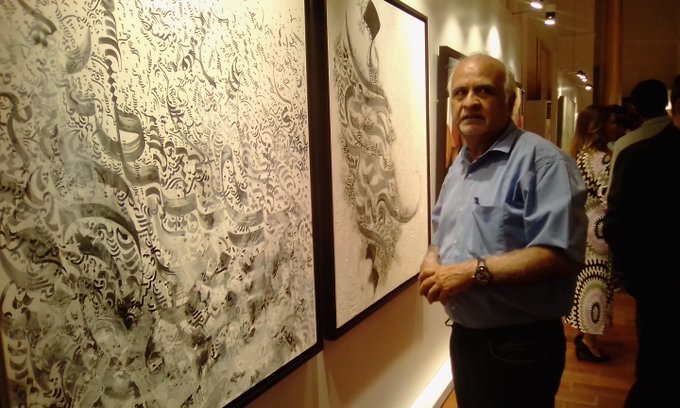
India Ka DNA 2019

Naresh Kumar Sagar
@Nksagar
·
16h
Sagar Media Inc India ka DNA 2019: BJP President Amit Shah. My Gov scan free and that Congress flush Crs of scams, BJP dev work in series for poor and dev stricken village.Child women Shaheed and last man’s on last line welfare is our model.
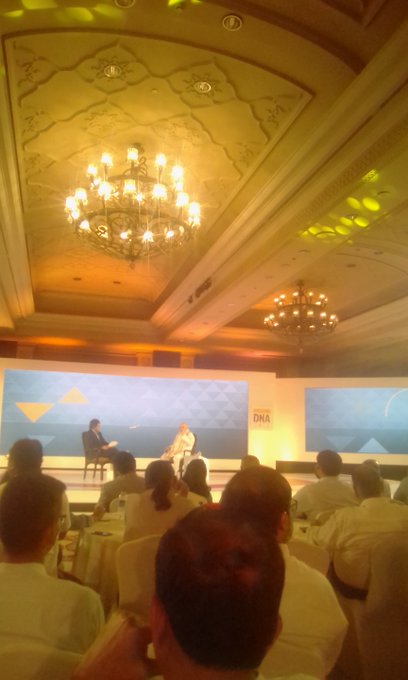

Naresh Kumar Sagar
@Nksagar
·
22h
Sagar Media Inc: Tejaasvee former Bihar CM mob lynching in rise if no peace and unity nation will not develope. Youth shall got jobs farmers remain distress and we largest nos of legislature allowed NiteshCM BJP Ed,CBI is partner in their acts.
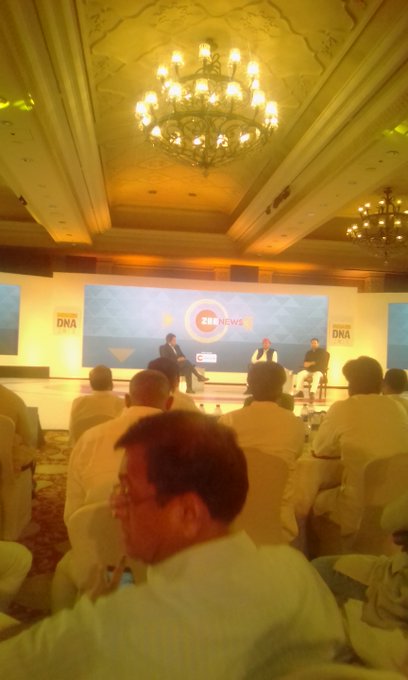

Naresh Kumar Sagar
@Nksagar
·
23h
Sagar Media Inc: Tejaasvee Yadav now in talk with Zee Business at India ka DNA 2019 see bye election results so Our unity not to defeat Modi but to strengthen the nation and opposition leader to be egoless contest the Election in 2019 put BJP to 116 seats level.AY silent strategy.

Naresh Kumar Sagar
@Nksagar
·
Jun 20
Sagar Media Inc : India ka DNA 2019 : Akhliesh Yadav Former CM UP talks Zee Business on Election 2019 about no work in UP as BJP is busy inaugurating and putting Foundation Stone for projects in UP, No smart (link: http://cities.no) cities.no infra,no bullet (link: http://train.No) train.No AIIMS.
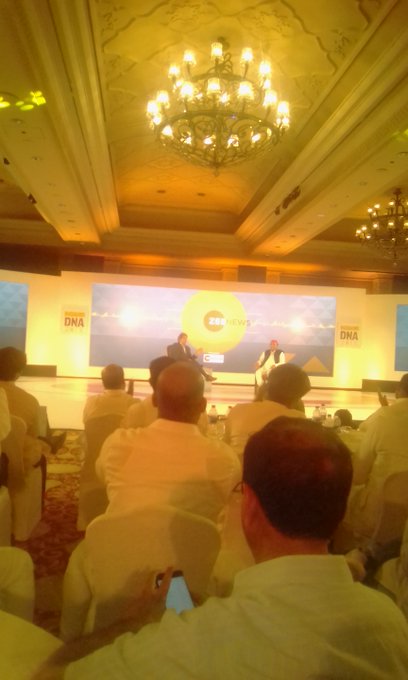
You Retweeted

Geo English
@geonews_english
·
Jun 20
Pakistan’s capital is drying up, faster than you think

Pakistan’s capital is drying up, faster than you think | Pakistan – Geo.tv
geo.tv
1
1
10

Naresh Kumar Sagar
@Nksagar
·
Jun 20
Sagar Media Inc: Akhliesh Yadav Former CM UP at India ka DNA 2019, with Subheer in deliberation Election 2019 is people want to live in unity.Any one come this land absorbed so let our youth not unemployed famers in (link: http://distress.No) distress.No infra projects in UP. Yogi inauguratonl
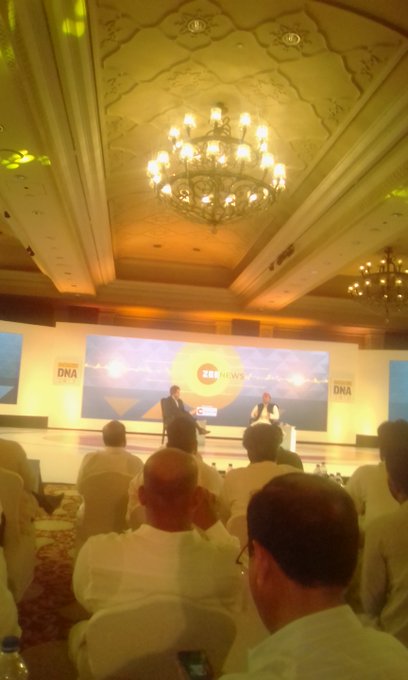

Naresh Kumar Sagar
@Nksagar
·
Jun 20
Sagar Media Inc : With Nepal Quake and Japan the musical chairs jerks to various tectonic plates in this fissured geological zone may hit Quake in PoK,Uttrakhand, Philippines, South Asian plates next to hit devastatingly sooner as Nepal central Asia another Geological retainers.
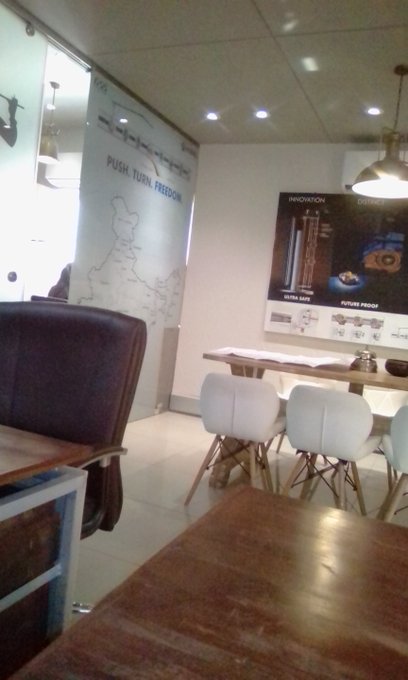
PM perform Yoga
Yoga unites, body, mind, and soul, says PM Modi.
Be healthy on International Day of Yoga : PM Modi participated on yoga day with 50K yoga practitioners and said on this day,From Tokyo to Toronto, from Stockholm to Sao Paulo, yoga has become a positive influence in the lives of millions: PM @narendramodi
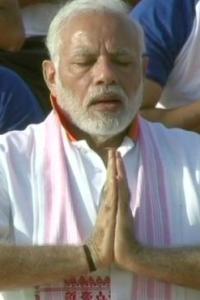
PM Modi is leading an estimated 50, 000 volunteers to mark the fourth anniversary of International Yoga Day.
The event in Dehradun is being held at the Forest Research Institute, which has been spruced up and security across Dehradun tightened.
In a message ahead of the Yoga Day celebrations, PM Modi wrote on Twitter, “Yoga is beautiful because it is ancient yet modern, it is constant yet evolving.
It has the best of our past and presents and a ray of hope for our future.
In Yoga, we have the perfect solution to the problems we face, either as individuals or in our society.
Praising the ancient art, the PM further wrote, “The way to lead a calm, creative & content life is Yoga. It can show the way in defeating tensions and mindless anxiety. Instead of dividing, Yoga unites. Instead of further animosity, Yoga assimilates. Instead of increasing suffering, Yoga heals.
Rediff
Many eminent personalities from Vice President, Governors Ministers, Indian Embassies abroad, army navy air forces and numerous institution are all celebrating International Yoga day with performance.
Ashbeer Saini sizzles with opening round seven-under-63 at Karnal
Karnal, Haryana, June 20, 2018: Twenty-four-year-old Ashbeer Saini of Kapurthala sizzled with a seven-under-63 on the opening day of the PGTI Feeder Tour event at the Madhuban Meadows Golf Club in Karnal, Haryana. Saini enjoyed a healthy four-shot lead over the rest of the field.
Vashista S Pawar of Coimbatore was in second place with a score of three-under-67.
Ashbeer Saini, a 10th tee starter, had a whirlwind start as he picked up five birdies on his first 11 holes thanks to some quality chip-putts and a 20-feet conversion from off the green on the 17th.
Ashbeer’s only blemish came on the third where he three-putted for bogey but he followed that up with birdies on the next three holes to set up the tournament for himself.
Saini, who turned professional in 2013 at the age of 19, said, “This round is a big confidence-booster as I’ve been out of form for quite some time now due to a wrist injury I suffered couple of years back. I’m now back to full fitness and slowly regaining my rhythm.
“I drove it well today and converted everything on the greens. The four birdies on the back-nine provided the spark to my round. It’s great to start the week in this manner. The focus will now be on capitalizing on this strong start.”
Vashista S Pawar struck four birdies and a bogey during his round of 67 to be placed second.
Karnal’s Maniram Sharma returned a three-over-73 to be tied 31st.
Indian Wheelchair Cricket Premier League-2018 Inaugurated on 20thJune, 2018
Indian Wheelchair Cricket Premier League-2018 Inaugurated on 20thJune, 2018
IWPL will be held on 21st to 24th June, 2018 in Dwarka, New Delhi-78
League of 15 overs matches among six teams
June 20, 2018, Wheelchair Cricket Premier League, a super completion for persons with disabilities started today in Bal Bhavan International School, Cricket Ground, Sector-12, Dwarka in New Delhi. The amazing event was inaugurated by the Delhi Police Commissioner Mr. Amulya Patnaik, along with Mr. Sibesh Singh, DCP, Dwarka and Mr. Madhup Tewari, Joint Commissioner of Police – South West Delhi. The League has also launched “PRAHARI” program in Dwarka and celibated the success of the special initiative to involve personnel such as Chowkidars and Security Guards for prevention of crime by Delhi Police. There was a special friendly match between Delhi Police and wheelchair players on 20th June, 2018 to rejoice the spirit of the event.India’s leading persons with*persons with special-abilitiessupport organization Wheelchair Talent Foundation is organizing this prestigious event in alliance with Disabled Supporting Society – Agra.
On this occasion, a road show was held with lot of fan fare where the participating 100 players, lots of people from Delhi- NCR and Dwarka, joined to make it a mega event; along with Delhi Police, from Ashirvad KM chowk to venue Bal Bhavan International School, Sector 12, Dwarka.
This is the IWPL – Indian Wheelchair Premier League! Modelled on the immensely popular IPL, this too, promises to attractspecial abilities cricket enthusiasts from Dwarka and people from Delhi – NCR . This will be a four day para-sports event- from 20th to 24th June. Six teams will compete in this tournament. The league matches will be held at the Bal Bhavan International School, Sector-12.This will comprise of 15-overs each side matches. The finals, of course, will be more exciting and gripping with teams battling with each other in a 20-20 over match.
The 4- day tournament will witness the match of the six teams which are Gujarat Fighters, Delhi Superstars, Maharashtra Tigers, Uttar Pradesh Heroes, Uttarakhand Warriors and Chennai Super strong. The event in Delhi has been conceptualized on the lines of Indian Premier League and is aimed at providing a sports opportunity to people with disabilities.
According to Mukesh Sinha, the Convenor of the league, “This tournament will provide a platform to para- athletes to showcase their talent. We hope that Dwarka and Delhi people will come forward and support this noble cause”. Mukesh Sinha further informs that the teams has already been franchised by corporates activities. Given the important message that this initiative is sending out, this tournament and its organisation has leading names as its patrons. This includes Kunal Gupta, Director- Bal Bhavan International School, V. P. Tandon, Director- Vandana International School, O P Khanduja- Business Head, DS Spiceco Pvt. Ltd., Surendra Kumar, Director- Kasturi Jewellers, Suresh Anand, Director- Pratham Group, Sanjay and SurajBhasin, Director Guruji Developers Pvt. Ltd.
Among the leading names taking part are Vinod Thakur, Niraj Yadav, Laxman Birhade are some of the noted players, who will participate in the league. Vinod Thakur is a renowned TV celebrity, a winner of India’s Got Talent and a finalist in Nach Baliye.
Wheelchair Talent Foundation is a non-profit organisation that is working towards the social welfare of persons with disabilities. It has been actively involved in organizing various tournaments and championships for para-athletes. This tournament was the dream of Disabled Sporting Society, Agra (UP) India was set up on 9th May, 2007 which set up an Indian Cricket team for the physically challenged youth of India. The Six captains of the teams include Laxman Birhade of Gujarat Fighters, Ramesh Sartape of Maharashtra Tigers, Atul Srivastava of Uttar Pradesh Heroes, Rajendra Singh Dhami of Uttarakand Warriors, Farooq Ahmad of Chennai Team and Vinod Thakur of Delhi Superstars. The captains are quite ecstatic and full of enthusiasm.
Time to end Terror
Governor N N Vohra asked the security forces to ‘end terror’ without worrying about any political hindrance in the state.
As per sources, Vohra said that now, the time is to work for the people of the state, as the country has high hopes.
“End terror, there is no political hindrance,” Vohra said.In the meeting, which took place at Raj Bhavan (residence of the Governor) in Srinagar, there were representatives from the Indian Army, Central Reserve Police Force, Jammu and Kashmir Police, Intelligence Bureau, Special Bureau and Crime Investigation Department, along with top Administrative officials.
The top officials concurred that the focus from now will be to conduct anti-terror operations, which will have specific intelligence, with an aim to minimise collateral damage. — ANI


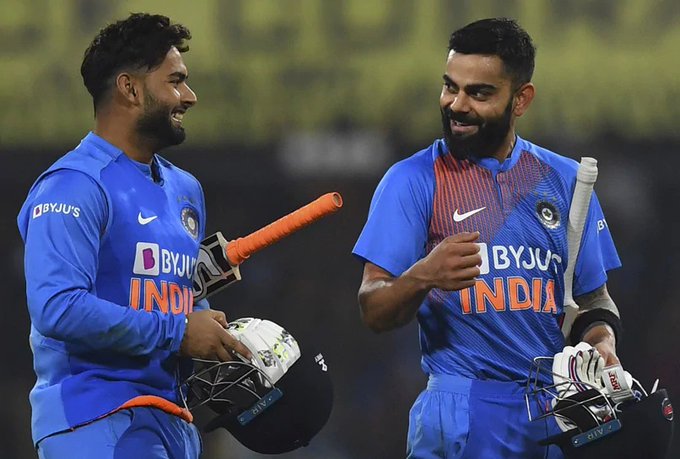
No comments:
Post a Comment